-
 Bitcoin
Bitcoin $101,898.5005
-0.75% -
 Ethereum
Ethereum $2,258.1125
-1.07% -
 Tether USDt
Tether USDt $1.0004
0.01% -
 XRP
XRP $2.0178
-2.93% -
 BNB
BNB $624.0243
-1.53% -
 Solana
Solana $134.3298
-0.90% -
 USDC
USDC $0.9999
0.01% -
 TRON
TRON $0.2675
-2.05% -
 Dogecoin
Dogecoin $0.1538
-1.96% -
 Cardano
Cardano $0.5482
-1.11% -
 Hyperliquid
Hyperliquid $35.5636
5.45% -
 Bitcoin Cash
Bitcoin Cash $453.4902
-1.66% -
 Sui
Sui $2.5134
-2.97% -
 UNUS SED LEO
UNUS SED LEO $9.1292
1.77% -
 Chainlink
Chainlink $11.8457
-1.60% -
 Stellar
Stellar $0.2312
-2.73% -
 Avalanche
Avalanche $16.9721
0.29% -
 Toncoin
Toncoin $2.7549
-3.82% -
 Shiba Inu
Shiba Inu $0.0...01081
-1.10% -
 Litecoin
Litecoin $80.8250
-0.71% -
 Hedera
Hedera $0.1374
0.21% -
 Monero
Monero $305.4827
-2.36% -
 Ethena USDe
Ethena USDe $1.0006
0.00% -
 Dai
Dai $1.0000
-0.01% -
 Polkadot
Polkadot $3.2085
-3.12% -
 Bitget Token
Bitget Token $4.0845
-3.13% -
 Uniswap
Uniswap $6.3353
-1.63% -
 Pi
Pi $0.5085
-0.70% -
 Pepe
Pepe $0.0...08913
-3.82% -
 Aave
Aave $232.7090
-0.58%
How to use CCI in band operation? What is the winning rate?
CCI and band operation help traders identify overbought and oversold conditions in crypto markets, enhancing entry and exit point accuracy.
May 23, 2025 at 08:49 pm
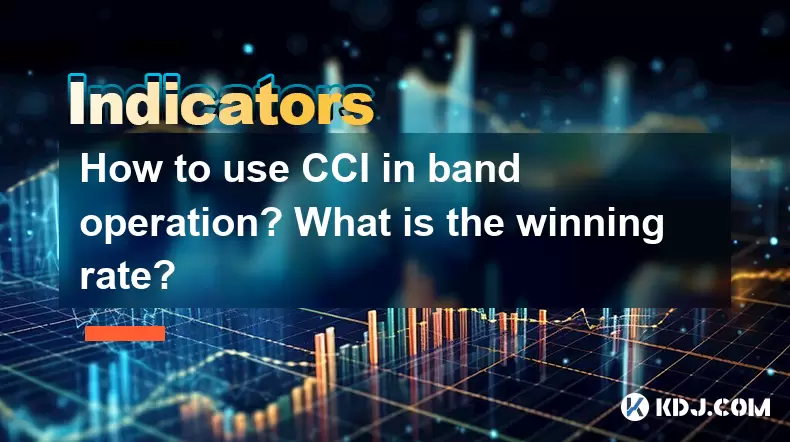
Introduction to CCI and Band Operation
The Commodity Channel Index (CCI) is a versatile indicator used in the cryptocurrency trading community to identify potential trading opportunities. When combined with band operation strategies, traders can enhance their ability to pinpoint entry and exit points effectively. Band operation involves setting upper and lower thresholds around a moving average to create bands that help traders visualize overbought and oversold conditions. This article will guide you through the process of using CCI in band operation and discuss the potential winning rates associated with this strategy.
Understanding the CCI Indicator
Before delving into band operation, it's crucial to understand the basics of the CCI indicator. The CCI measures the deviation of the price from its statistical mean. It's typically calculated over a 20-day period and oscillates around a zero line. Values above +100 indicate overbought conditions, while values below -100 suggest oversold conditions. Traders often look for these extreme values to make trading decisions.
Setting Up Bands for CCI
To integrate CCI with band operation, you'll need to set up bands around a moving average. Here's how to do it:
- Choose a moving average: A simple moving average (SMA) or an exponential moving average (EMA) can be used. For this example, let's use a 20-day SMA.
- Determine the band width: Typically, bands are set at a fixed percentage above and below the moving average. A common choice is 2% above and below the SMA.
- Plot the bands: Once you have your moving average and band width, plot the upper band at 2% above the SMA and the lower band at 2% below the SMA.
Combining CCI with Band Operation
Now that the bands are set up, you can integrate the CCI to enhance your trading strategy:
- Identify overbought and oversold conditions: When the CCI rises above +100, it signals an overbought condition. If the price is also touching or crossing the upper band, it could be a good time to consider selling.
- Identify potential buy signals: Conversely, when the CCI falls below -100, it indicates an oversold condition. If the price is touching or crossing the lower band, it might be a good time to consider buying.
Executing Trades Using CCI and Bands
To execute trades using this strategy, follow these steps:
- Monitor the CCI and price movement: Keep an eye on the CCI values and the price's position relative to the bands.
- Look for confirmation: Wait for the CCI to cross above +100 or below -100 and for the price to touch or cross the corresponding band.
- Enter the trade: If the conditions are met, enter a sell order when the price touches the upper band and the CCI is above +100. Enter a buy order when the price touches the lower band and the CCI is below -100.
- Set stop-loss and take-profit levels: To manage risk, set a stop-loss order just outside the opposite band. For example, if you're selling, set the stop-loss just above the upper band. Set take-profit levels based on your risk-reward ratio.
Analyzing the Winning Rate
The winning rate of using CCI in band operation can vary based on several factors, including market volatility, the specific cryptocurrency being traded, and the time frame of the chart. Here are some considerations:
- Historical performance: Backtesting the strategy on historical data can give you an idea of the winning rate. For instance, if out of 100 trades, 60 were profitable, the winning rate would be 60%.
- Market conditions: In highly volatile markets, the strategy might yield a higher winning rate due to more frequent price movements between the bands.
- Adjustments to parameters: Tweaking the band width or the CCI period can impact the winning rate. Narrower bands might increase the number of signals but could also increase false positives.
Practical Example of CCI and Band Operation
Let's walk through a practical example to illustrate how to use CCI in band operation:
- Scenario: You're trading Bitcoin on a daily chart.
- Setup: You have a 20-day SMA with bands set at 2% above and below the SMA. The CCI is set to a 20-day period.
- Observation: The price of Bitcoin touches the upper band, and the CCI rises above +100.
- Action: You enter a sell order, expecting the price to revert back towards the SMA.
- Outcome: If the price does indeed move back towards the SMA, you close the trade at a profit. If the price continues to rise, you hit your stop-loss just above the upper band.
Adjusting the Strategy
To optimize your strategy, consider the following adjustments:
- Band width: Experiment with different band widths to find the optimal setting for your trading style. Wider bands might result in fewer but more reliable signals.
- CCI period: Adjusting the CCI period can help you fine-tune the sensitivity of the indicator. A shorter period might generate more signals, while a longer period could filter out noise.
- Combining with other indicators: Consider integrating other technical indicators, such as the Relative Strength Index (RSI) or Moving Average Convergence Divergence (MACD), to confirm signals.
Frequently Asked Questions
Q: Can CCI and band operation be used for all cryptocurrencies?
A: While CCI and band operation can be applied to most cryptocurrencies, the effectiveness may vary. Highly volatile cryptocurrencies might yield more frequent signals, but they also come with higher risk. It's essential to backtest the strategy on the specific cryptocurrency you're interested in trading.
Q: How do market conditions affect the winning rate of this strategy?
A: Market conditions play a significant role in the winning rate. In trending markets, the strategy might perform better when used in the direction of the trend. In ranging markets, the strategy can be more effective as prices are more likely to oscillate between the bands.
Q: Is it necessary to adjust the CCI period and band width frequently?
A: Adjusting the CCI period and band width can be beneficial to adapt to changing market conditions. However, frequent adjustments might lead to overfitting the strategy to past data. It's advisable to find a balance and periodically review and adjust your settings based on performance and market conditions.
Q: Can this strategy be automated using trading bots?
A: Yes, the strategy can be automated using trading bots. Many trading platforms offer the ability to program custom indicators and strategies. You'll need to code the CCI and band operation logic into the bot and set up the necessary parameters and risk management rules.
Disclaimer:info@kdj.com
The information provided is not trading advice. kdj.com does not assume any responsibility for any investments made based on the information provided in this article. Cryptocurrencies are highly volatile and it is highly recommended that you invest with caution after thorough research!
If you believe that the content used on this website infringes your copyright, please contact us immediately (info@kdj.com) and we will delete it promptly.
- Cryptocurrencies, Coingecko, and Trending Tokens: What's Hot Now?
- 2025-06-23 23:05:12
- Bitcoin, Meerkat, and Onchain Engagement: A New Era of Crypto
- 2025-06-23 23:25:12
- Cloud Mining, Bitcoin, and XRP: A 2025 Perspective
- 2025-06-23 23:25:12
- Neo Pepe Coin: Meme Crypto with Explosive Potential?
- 2025-06-23 23:45:12
- FUNToken: Decoding Past Trends and Getting Started in the Gaming Crypto Sphere
- 2025-06-23 22:25:12
- Eyenovia Goes Crypto: A HYPE Treasury and Potential Rebrand
- 2025-06-23 23:45:12
Related knowledge

Is it contradictory that the moving average system is arranged in a bullish pattern but the DMI shows a decline in trend strength?
Jun 23,2025 at 11:43pm
Understanding the Moving Average and DMI RelationshipIn cryptocurrency trading, technical analysis plays a crucial role in identifying potential trends and making informed decisions. Two of the most commonly used indicators are the Moving Average (MA) and the Directional Movement Index (DMI). While both tools aim to provide insight into market direction...

What is the significance of the gap formed by the gap opening not being filled within five days?
Jun 23,2025 at 09:42pm
Understanding Gaps in Cryptocurrency TradingIn the world of cryptocurrency trading, a gap refers to a situation where the price of an asset jumps from one level to another without any trading activity occurring between those two levels. This often happens over weekends or holidays when the market is closed, and significant news or events occur that impa...
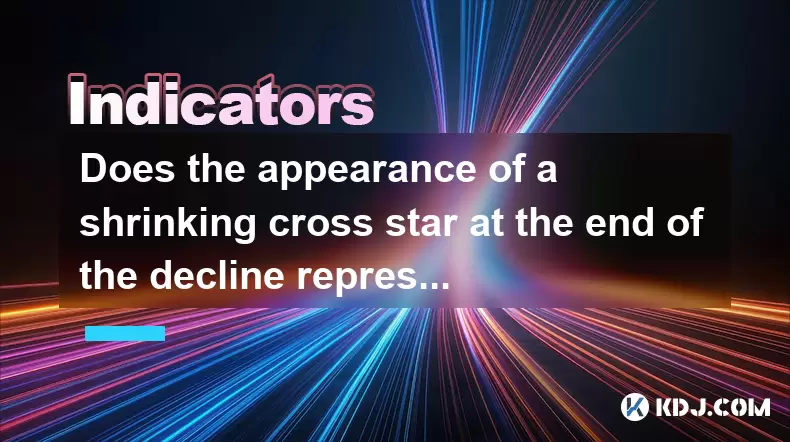
Does the appearance of a shrinking cross star at the end of the decline represent a signal to stop the decline?
Jun 24,2025 at 12:14am
Understanding the Shrinking Cross Star PatternIn the world of cryptocurrency trading, candlestick patterns play a crucial role in technical analysis. One such pattern is the shrinking cross star, which often appears at the end of a downtrend. This pattern consists of a candle with a small body, typically appearing after a series of bearish candles, and ...
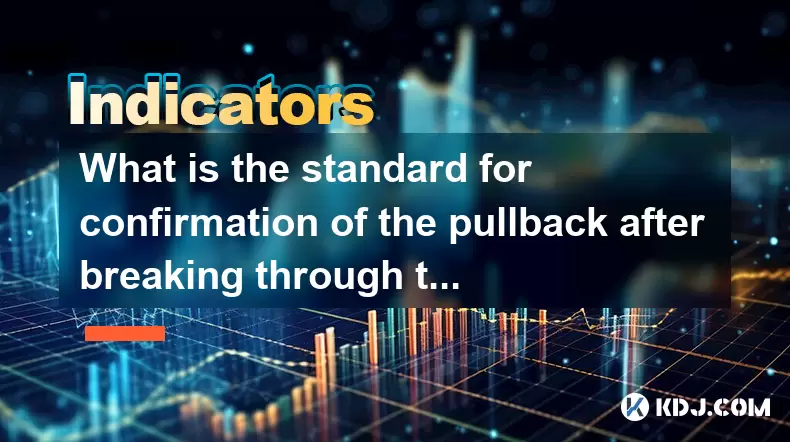
What is the standard for confirmation of the pullback after breaking through the neckline with large volume?
Jun 23,2025 at 11:28pm
Understanding the Neckline in Technical AnalysisIn technical analysis, the neckline is a critical support or resistance level that appears in chart patterns such as head and shoulders, double tops, and double bottoms. It typically connects two or more lows (in the case of a head and shoulders top) or highs (in the case of a head and shoulders bottom). W...
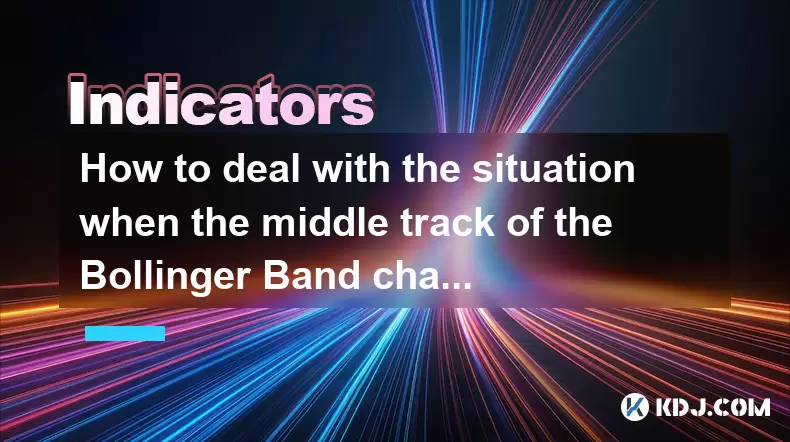
How to deal with the situation when the middle track of the Bollinger Band changes from support to resistance?
Jun 23,2025 at 11:22pm
Understanding the Bollinger Band Middle TrackThe Bollinger Band is a widely used technical indicator in cryptocurrency trading. It consists of three lines: the upper band, the lower band, and the middle track, which is typically a 20-period simple moving average (SMA). Traders often rely on the middle track as a dynamic support or resistance level. Howe...
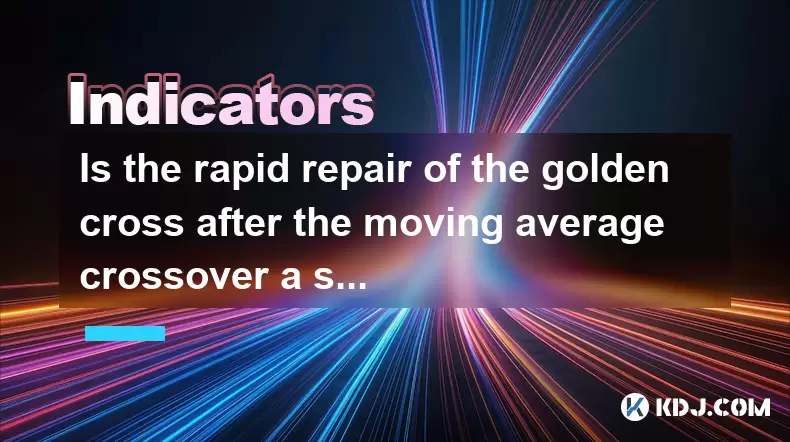
Is the rapid repair of the golden cross after the moving average crossover a signal of inducing short selling?
Jun 24,2025 at 12:01am
Understanding Moving Averages and Their Role in Technical AnalysisIn the realm of technical analysis, moving averages (MAs) are among the most widely used tools by traders to identify trends and potential reversals. These indicators smooth out price data over a specific time period, offering a clearer view of market direction. The two most common types ...

Is it contradictory that the moving average system is arranged in a bullish pattern but the DMI shows a decline in trend strength?
Jun 23,2025 at 11:43pm
Understanding the Moving Average and DMI RelationshipIn cryptocurrency trading, technical analysis plays a crucial role in identifying potential trends and making informed decisions. Two of the most commonly used indicators are the Moving Average (MA) and the Directional Movement Index (DMI). While both tools aim to provide insight into market direction...

What is the significance of the gap formed by the gap opening not being filled within five days?
Jun 23,2025 at 09:42pm
Understanding Gaps in Cryptocurrency TradingIn the world of cryptocurrency trading, a gap refers to a situation where the price of an asset jumps from one level to another without any trading activity occurring between those two levels. This often happens over weekends or holidays when the market is closed, and significant news or events occur that impa...

Does the appearance of a shrinking cross star at the end of the decline represent a signal to stop the decline?
Jun 24,2025 at 12:14am
Understanding the Shrinking Cross Star PatternIn the world of cryptocurrency trading, candlestick patterns play a crucial role in technical analysis. One such pattern is the shrinking cross star, which often appears at the end of a downtrend. This pattern consists of a candle with a small body, typically appearing after a series of bearish candles, and ...

What is the standard for confirmation of the pullback after breaking through the neckline with large volume?
Jun 23,2025 at 11:28pm
Understanding the Neckline in Technical AnalysisIn technical analysis, the neckline is a critical support or resistance level that appears in chart patterns such as head and shoulders, double tops, and double bottoms. It typically connects two or more lows (in the case of a head and shoulders top) or highs (in the case of a head and shoulders bottom). W...

How to deal with the situation when the middle track of the Bollinger Band changes from support to resistance?
Jun 23,2025 at 11:22pm
Understanding the Bollinger Band Middle TrackThe Bollinger Band is a widely used technical indicator in cryptocurrency trading. It consists of three lines: the upper band, the lower band, and the middle track, which is typically a 20-period simple moving average (SMA). Traders often rely on the middle track as a dynamic support or resistance level. Howe...

Is the rapid repair of the golden cross after the moving average crossover a signal of inducing short selling?
Jun 24,2025 at 12:01am
Understanding Moving Averages and Their Role in Technical AnalysisIn the realm of technical analysis, moving averages (MAs) are among the most widely used tools by traders to identify trends and potential reversals. These indicators smooth out price data over a specific time period, offering a clearer view of market direction. The two most common types ...
See all articles
























































































